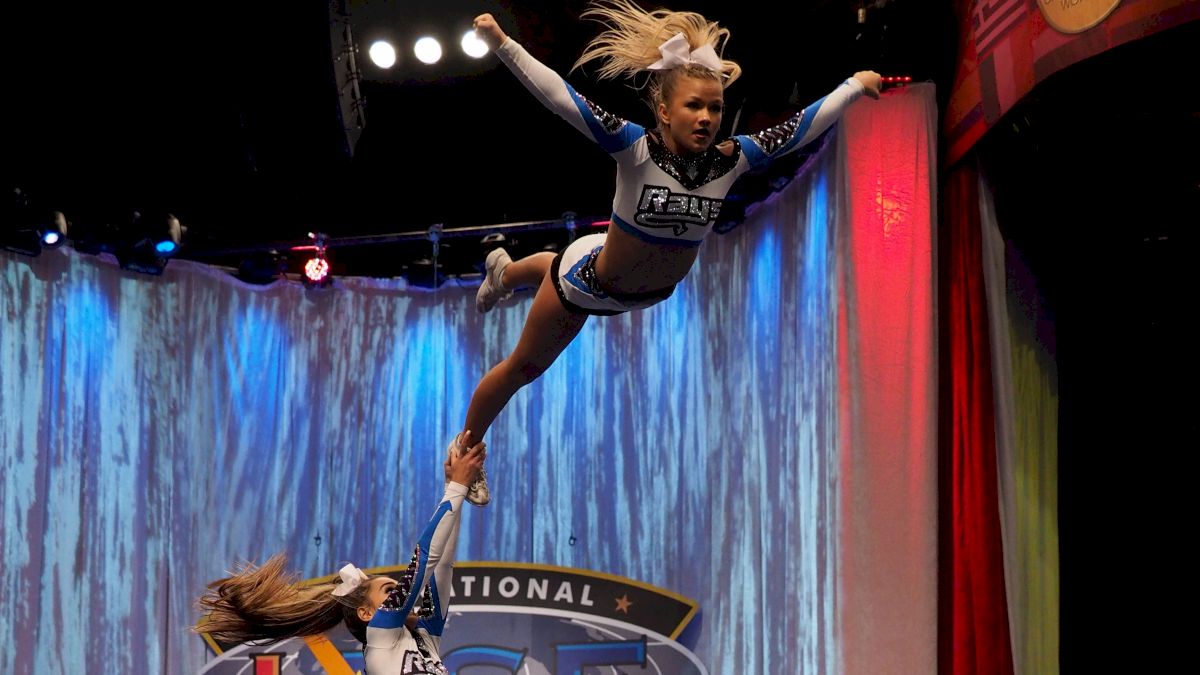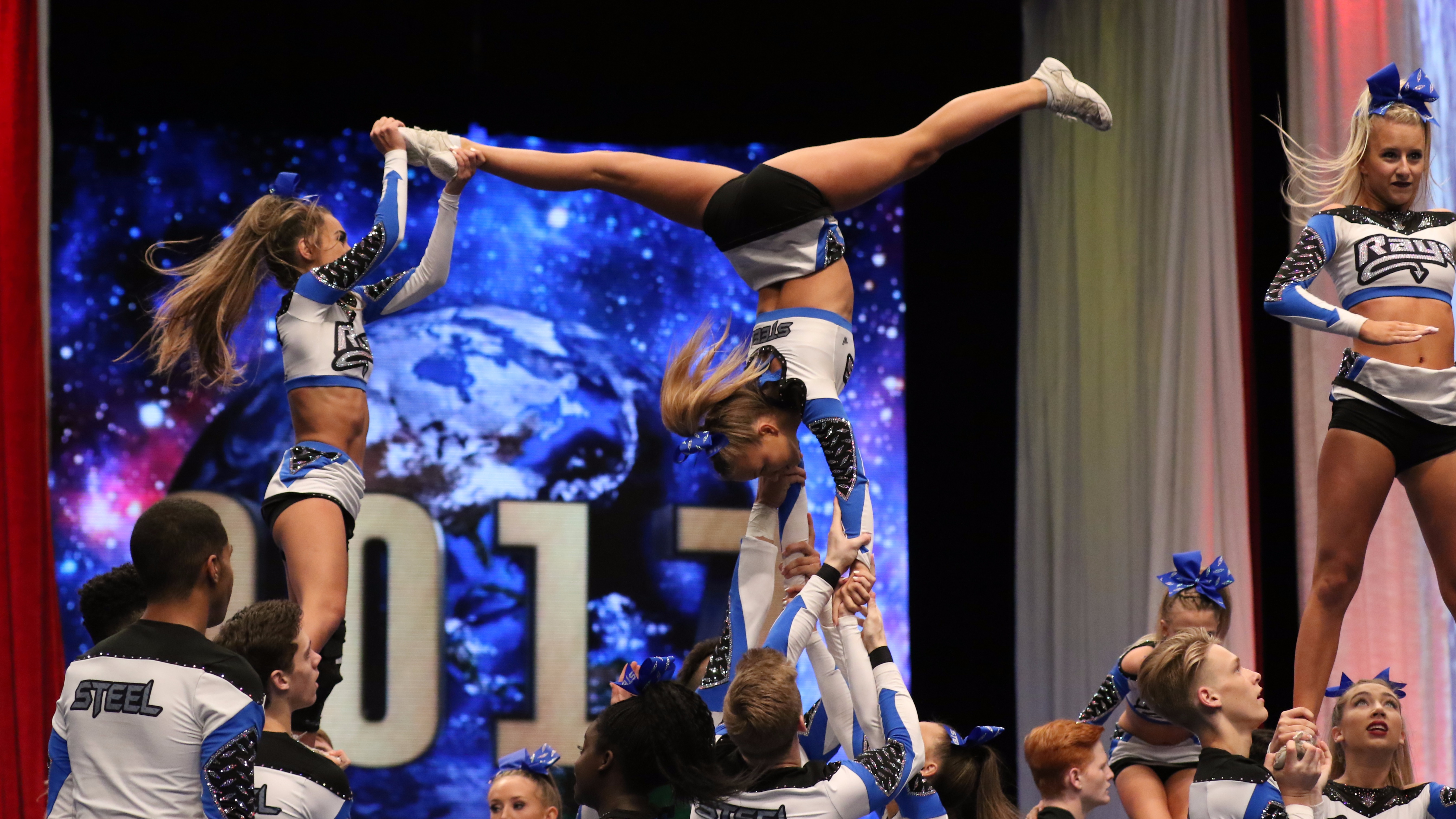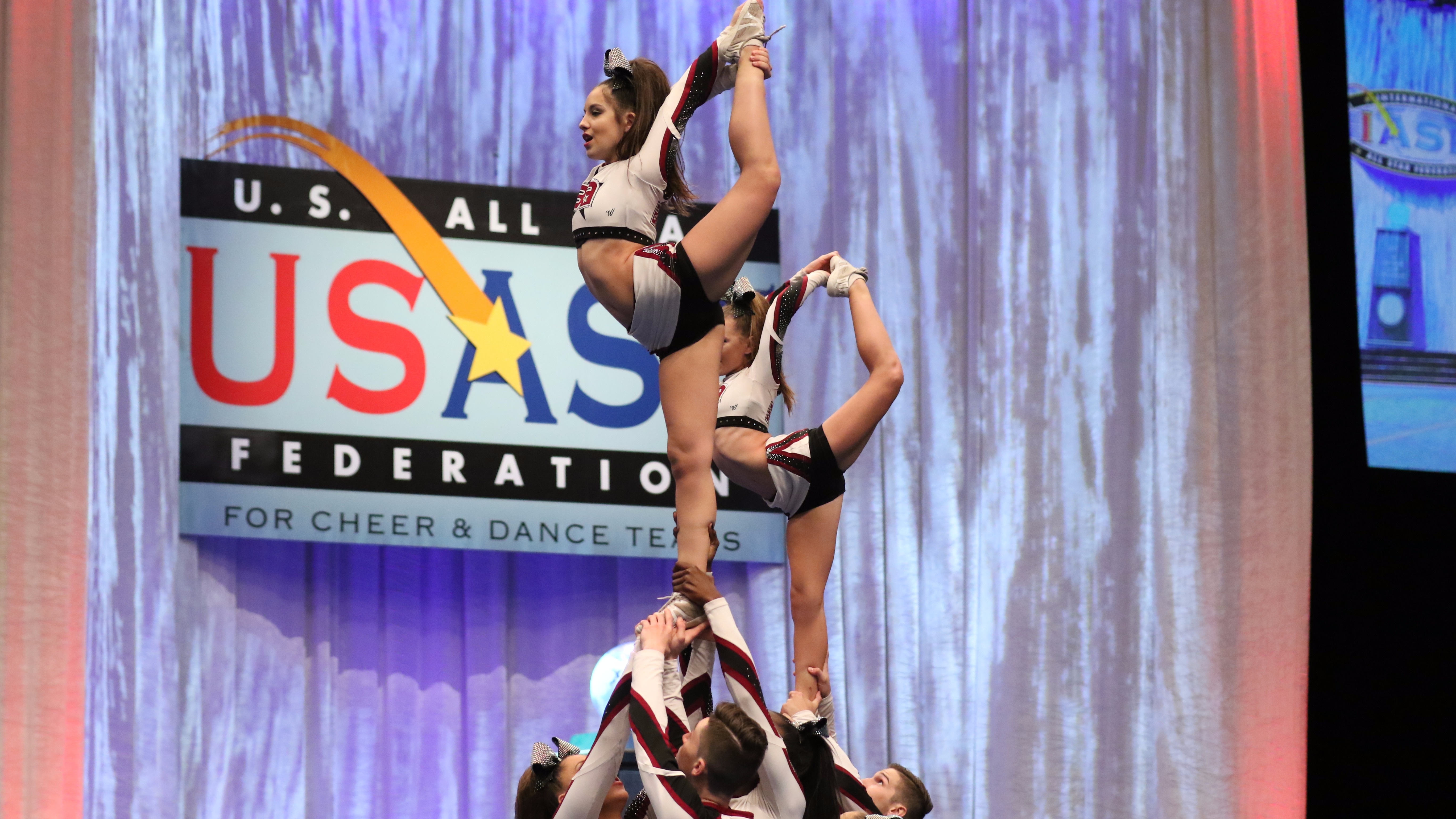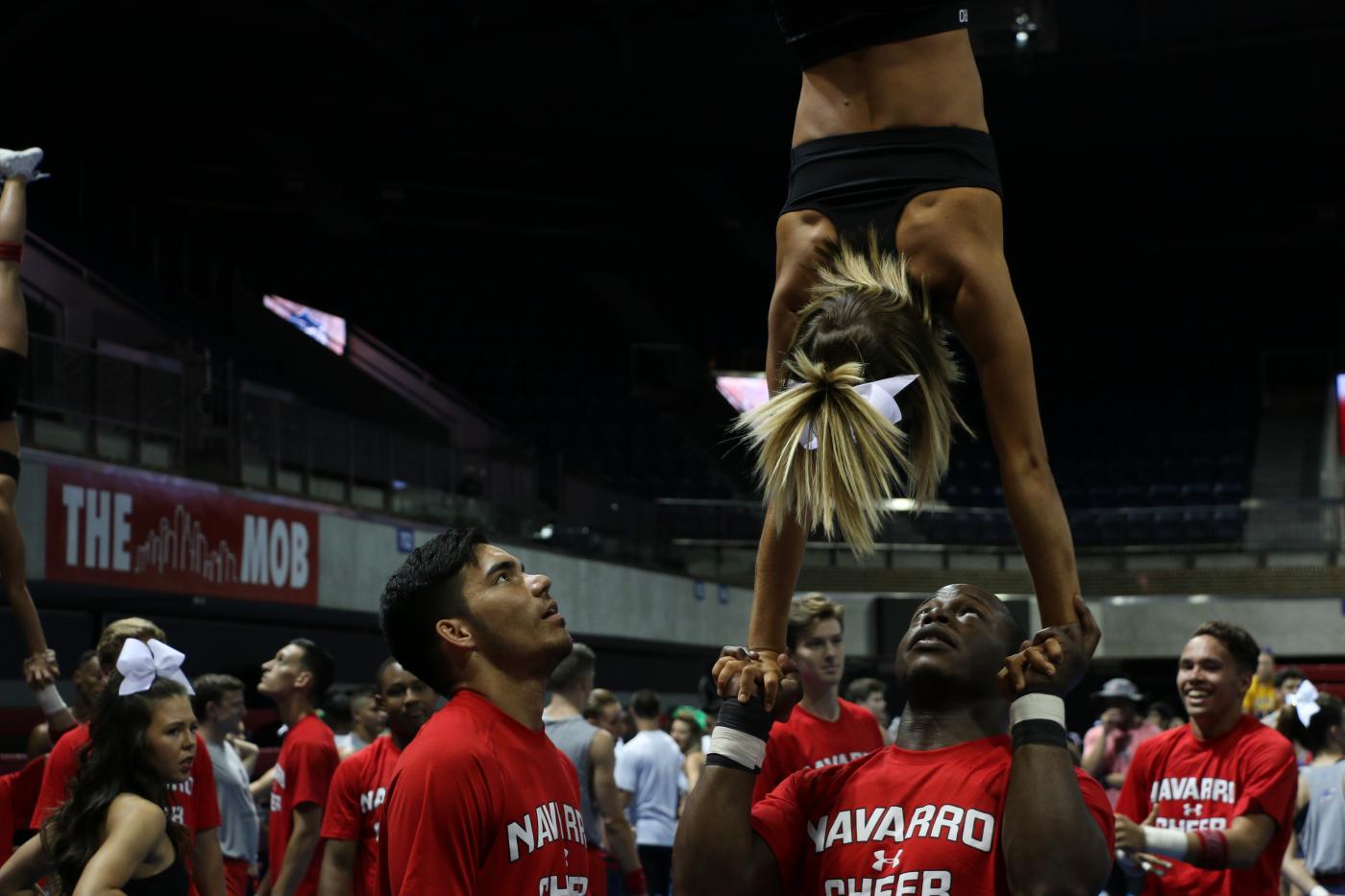The TRUTH About Being A FLYER!
The TRUTH About Being A FLYER!
We debunk the myths and show you the real truth about being a flyer!

Bright eyed and eager, dozens of new cheerleader hopefuls enter the gym for their first practice. They watch the older kids practicing their routines in awe. Though the entire team they're watching is talented, their focus stays centered on just a few select members of the squad. These rookie cheerleaders can't stop watching the flyers. They'll go home that night and start pulling scorpions in their bedrooms and every parent will hear the words spoken...
Mom - I want to be a flyer.
If you talk to coaches, spanning every corner of the map, they would agree that the majority of their cheerleaders, at one point or another, had dreams of being a flyer. Being in the spotlight is the ideal position in the minds of many cheerleaders, and sometimes even their parents. It's a highly desired position but in reality, being a flyer is not for everyone.
To succeed, it's important to have a tough skin, a willingness to put in extra work, an extreme focus, and unwavering courage and trust in those around them.

MYTH: Being a flyer is less work than being a base.
TRUTH: Although bases have the strenuous job of lifting, catching and keeping their flyer safe, the flyer position also takes an abundant amount of physical effort. Flyers must practice over and over how to stand solidly with their leg locked. They must train the muscles in their legs and backs to present the highest amount of flexibility and poise possible.
Coaches often to implement vigorous flexibility training regimens specifically for their flyers to maximize the points on a competition score sheet. Flyers are expected to have fully extended scorpions, scales, heel stretches, bow and arrows and needles all while standing on the hands of a few people 10 feet in the air. They have to execute all these elements with the proper timing, technique and performance with no fear.

MYTH: Flyers only stretch at practice.
TRUTH: Flyers are expected to stretch daily, on their own, in addition to the stretching they do at practice (and everywhere!) Most coaches have an expectation that flyers take extra stretching classes, sign up for ballet or yoga, or dedicate time daily to their stretching regimen. Each coach will have a different approach and level of expectation but when a flyer can't perform a specific body position, there is the possibility that they will be replaced with someone who is more flexible.
Want to increase your flexibility?
Check out these Flexibility Tips From Blake Forry!

MYTH: Once you're a flyer you'll always be a flyer.
TRUTH: Flyer positions are always up for grabs. Just because someone flies one season doesn't mean that their position is set in stone. Coaches are evaluating a flyer's technique, tightness, flexibility, attitude, attendance, focus, ability to learn quickly and make corrections, at all times. It's also a good experience for a flyer to do some basing. When a flyer learns to base she develops a better understanding of what's it's like to have a loose flyer in the air.
Coaches and cheerleaders talk about the key elements behind becoming a strong flyer.
MYTH: Only small people can be flyers.
TRUTH: It can sometimes be helpful to have a small flyer, but the flyer position is more about body control.
Proper technique is the key, no matter the size - if a person doesn't execute the fundamentals, they will not be an asset to the stunt group.
Flyers must have a keen sense of body awareness and know where they are in the air, understand the counts of the routine and have the confidence to continue performing when the stunt doesn't go as expected. Flyers don't just pop up at the top of the pyramid, hit their motions and look cute - they are very driven, detail-oriented and athletic individuals and are always looking for ways to perfect their skills.

MYTH: When a stunt falls it's the flyer's fault.
TRUTH: It's easy to assign blame because the flyer is the one spotlighted. But in most cases, when a stunt falls there are a variety of elements that influence the miss. For the ease of identification, the team and the coaches often refer to the stunt group according to the name of the flyer. So, whether it was the flyer's fault or not, that person's name is always the one associated with any mistakes that were made.
A flyer MUST have a tough skin because she is constantly being given advice, suggestions, corrections and critiques. If a flyer is not open to feedback, they will not enjoy their experience and may be tempted to quit before they even get started.

MYTH: A cheerleader can learn to fly in just a few practices or even one season.
TRUTH: Flying is learned progressively in the same way that learning to tumble is learned in stages, skill by skill. Good coaches will begin teaching flyers the basics like weight distribution, body positions, locking the leg, and what it means to be "tight" and will re-visit these basics a few times each year.
Learning to fly is a process and flyers and coaches should follow the level progressions provided by the USASF to ensure safety is of utmost importance. Confidence is a key factor in being a good flyer. When a flyer learns a stunt step by step, instead of rushing into trick she isn't ready, for she will evolve into a flyer who is not only eye-catching but also believes in herself and her abilities.

MYTH: When a flyer grows she can't be a flyer anymore.
TRUTH: This myth goes hand-in-hand with the 'small flyers only' myth. It's just not true! If a flyer has implemented good technique consistently during her seasons of flying, she will continue to thrive at the top of her stunts.

MYTH: Only girls can be flyers.
TRUTH: We commonly refer to flyers in the cheer world as "she" or 'her" because traditionally it's girls who you will see flying. However, from time to time an outstanding male flyer will enter the scene. The same expectations are considered for male flyers as with females. Occasionally, in rare situations, you will see a male dominated basket toss or stunt, to show off the male's incredible body control and to catch the attention of the audience and judges.
Vizion 20/20 proves anyone can be a flyer!
MYTH: I wasn't a flyer at my school or on my all-star squad so I can't be a flyer in college.
TRUTH: With ample preparation, a desire to improve and a positive attitude new flyers can develop into great flyers. If you're a high school student and think that you might want to cheer on a college coed cheer squad, do not wait another minute to start learning to fly! It takes time to build those skills and many universities will factor in the candidate's flying abilities into their evaluation.
Don't be unprepared - sign up for private stunt lessons the minute you decide you want to be a college cheerleader! Take some time to give serious thought into what it truly takes to be a top-notch flyer.

If you have your heart set on that role you should GO FOR IT! It is a position you must earn and it is a privilege. Every flyer should aspire to be the one that ALL the bases want to base. Keep in mind that being a flyer takes a huge amount of physical work but more importantly it takes a strong mind, a determined work ethic, maturity, and dedication to bettering your skills every day.